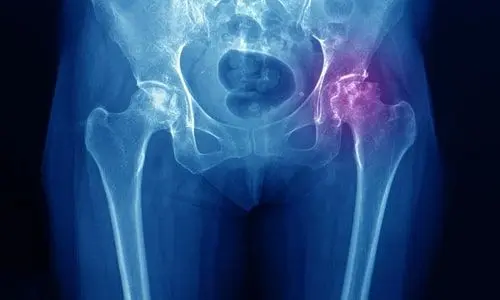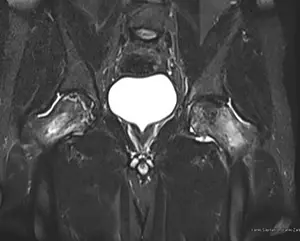
Avascular Necrosis Surgery in Turkey
Contents:
- Avascular Necrosis After Surgery
- What are the chances of surviving avascular necrosis?
- Is it possible to get a disability report for femoral head avascular necrosis?
- Is there any herbal treatment for femoral head avascular necrosis?
- What is the physical treatment for femoral head avascular necrosis?
- Is avascular necrosis cancer?
- What happens if avascular necrosis is left untreated?
- What is good for avascular necrosis pain?
- What is hip joint avascular necrosis?
- How does the femur bone heal?
- What is avascular necrosis of the femoral head?
- Who gets avascular necrosis?
- How to understand avascular necrosis?
- What causes femoral head necrosis?
What is Avascular Necrosis?
Avascular necrosis is a process that begins with cellular death of bone cells due to deterioration of microcirculation and nutrition of the bone. There may be mechanical and biological factors that disrupt this microcirculation. Sometimes no cause can be found. It is most commonly seen in the hip bone. In some places, the disease name is also called femoral head avascular necrosis. When the bone cannot be nourished, bone death begins. The strength of the bone decreases and the joint surface collapses. It is a progressive disease. It can affect the entire joint and lead to calcification.
Avascular Necrosis Symptoms
Avascular Necrosis Symptoms first begin with mild pain and limitation of movement. The disease has different stages. As the stage progresses, symptoms and complaints increase. It increases the intensity of pain. In the later stages of the disease, rest pain and even night pain begin. Some patients cannot sleep at night due to pain. Pain in the hip joint and limping due to limitation of movement are among the most prominent complaints.
Avascular Necrosis Diagnosis Methods
X-ray and MRI can be used for diagnosis. The disease has 7 stages. In the early stages, x-rays are normal. There are no findings. However, bone edema and necrosis can be seen in the early stages on MRI. Tomography is used to detect whether there is a collapse of the femoral head in the later stages of the disease. If the femoral head collapses, it indicates that the efficiency of salvage surgeries has decreased. Once collapse begins, the hip rapidly progresses towards calcification.
Avascular Necrosis Treatment Methods
There are hundreds of treatment methods for avascular necrosis disease. It is divided into two as surgical and non-surgical treatments. There are methods such as osteoporosis medications, ozone therapy, hyperbaric oxygen therapy, and weight-bearing use with crutches. However, these methods generally have very low success rates. If the disease is detected at an early stage, resuscitation with drilling and drilling surgery and addition of stem cell therapy is a suitable option. If the disease is detected at a late stage, we perform total hip replacement surgery.
Avascular Necrosis Surgery
Avascular necrosis surgery, drilling and stem cells are performed at an early stage. If the patient is young, it is one of the most common surgeries we perform. The process is done in a closed manner. There is no open wound in the patient. The damaged area is reached under x-ray with special tools. The damaged area is revitalized. Stem cells obtained from belly fat are injected into the necrosis area. If it is detected at a late stage, total hip replacement surgery is performed. Since these patients are generally young, ceramic prostheses are preferred so that they can use their prosthesis for a lifetime.
Avascular Necrosis Pre-Surgery
Patients usually have a lot of pain before surgery for avascular necrosis. There is movement restriction in the joint. Patients generally cannot step on their legs. When a condition does not respond to many medical treatments, surgery is decided. Details are given to the patient before the surgery. It is explained in detail that a prosthesis may be required if there is no benefit from stem cells.
Avascular Necrosis After Surgery
If drilling was performed during the surgery, it is necessary to use crutches for 3 weeks.
Stem cells are injected in this surgery. The necrosis area is revived and 3 weeks of rest is recommended. The patient can return to normal life after 1 month. Healing is checked with MRI imaging. If hip replacement surgery was performed, the patient can walk on it the next day.15. The wound is checked on the first day. The patient can return to normal life after 1 month.
What are the chances of surviving avascular necrosis?
It varies depending on the disease stage. If diagnosed early and treated early, the chance of survival is high. If the stage is advanced, the patient is not diagnosed or treatment is delayed, and the femoral head begins to collapse, there is no chance of survival.
Is it possible to get a disability report for femoral head avascular necrosis?
After the disease ends, it is checked how many sequelae it leaves. If it has healed without any problems and there is no loss of function, a disability report will not be received. If the disease has progressed and a prosthesis has been used, a disability report is issued according to the appropriate rates written in the regulation.
Is there any herbal treatment for femoral head avascular necrosis?
There is no herbal treatment for avascular encrosis of the femoral head. It is a bone-specific disease in which microcirculation is impaired, and herbal medicine is not recommended. Current treatments are recommended in the light of scientific studies.
What is the physical treatment for femoral head avascular necrosis?
Physical therapy may only be a short-term help to reduce pain. Physical therapy has no place in the preoperative period. It may be required as needed in the postoperative period.
Is avascular necrosis cancer?
Avascular necrosis is not cancer. It does not spread to another part of the body. It does not reoccur after surgery. It is the loss of vitality of bone tissue due to the nutritional problem of the bone.
What happens if avascular necrosis is left untreated?
If avascular necrosis is not treated, the joint collapses. Cartilage destruction and calcification occur. Joint movements are restricted and severe pain occurs.
What is good for avascular necrosis pain?
Non-steroidal anti-inflammatory drugs relieve pain. Since paracetomol does not have edema-reducing properties, it provides little relief from pain. Biphosphonates are used in treatment. Vitamin C calcium and vitamin D can be used to strengthen bones.
What is hip joint avascular necrosis?
Avascular necrosis located in the hip, which we call the femoral head, is called hip joint avascular necrosis. The most common cause in our country is the use of steroids, namely cortisone. Alcohol, hyperlipidemia, and trauma can also trigger hip joint avascular necrosis. The hip joint is round like a ping-pong ball. When collapse occurs, the joint becomes round and the ball-socket-shaped joint harmony is disrupted, which triggers calcification.
How does the femur bone heal?
When biological blood supply increases, the bone begins to heal. Drilling and stem cells are done for this. Stem cells revitalize bone and trigger healing. Sometimes, only eliminating the underlying cause of avascular necrosis provides healing.
What is avascular necrosis of the femoral head?
It is another name for hip joint avascular necrosis. The hip joint consists of the femoral head and the acetabulum, or socket. Hip joint avascular necrosis does not involve the acetabulum, but usually involves the femoral head, so the disease is called femoral head avascular necrosis.
Who gets avascular necrosis?
Avascular necrosis occurs in people who are prone to this disease when risk factors combine. A number of anatomical factors in the hip joint may trigger this condition. Cortisone use is seen in cases such as heavy alcohol use and sickle cell anemia.
How to understand avascular necrosis?
When the hip is examined, the examination findings of avascular necrosis are very typical. There is pain that starts from the groin and spreads to the front of the leg, to the inner side of the leg, and spreads down to the knee. Diagnosis is made with x-ray and MRI.
What causes femoral head necrosis?
Bone nutrition is impaired and it loses its vitality, resulting in femoral head necrosis. For example, in sickle cell anemia, sickle-shaped blood cells block the microvessels and when the vessel is mechanically blocked, bone nutrition is impaired. For example, the use of cortine disrupts the microstructure of the vessels and prevents bone nutrition. Trauma is one of the most common triggers for avascular necrosis in the hip joint.

MRI image of avascular necrosis disease in the hip that develops due to cortisone (steroid) use. Hip replacement surgery was performed in this advanced case.

